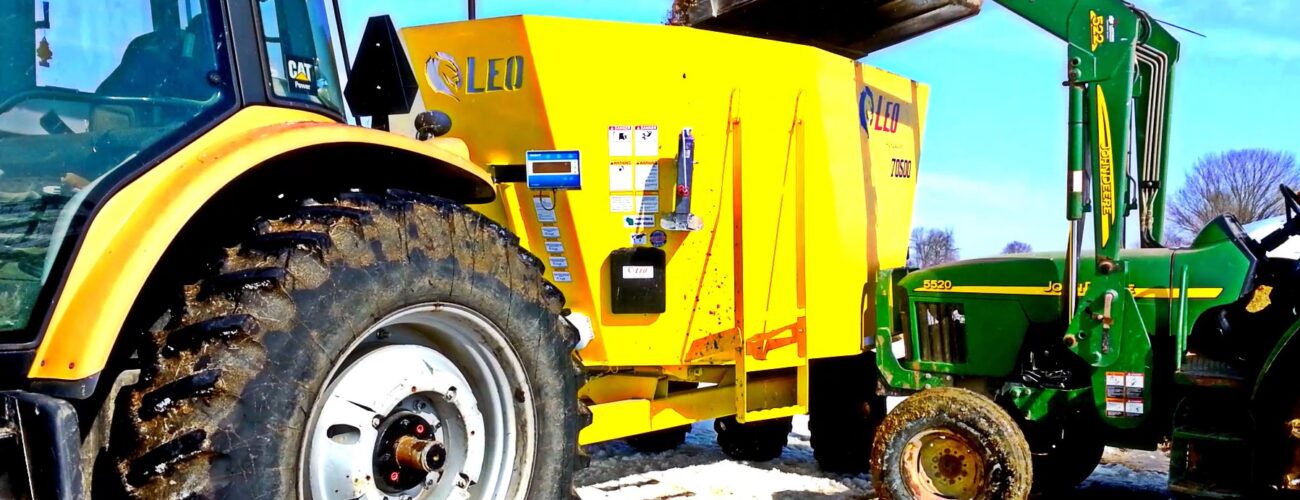**Adjusting TMR Feeding for Optimal Cattle Performance in Cold Weather**
**Introduction:**
Maintaining cattle’s nutritional well-being is critical for their health, productivity, and profitability. When temperatures drop below the lower critical temperature (LCT), cattle experience cold stress and require adjustments to their feed rations to compensate for increased energy expenditure and maintain their core body temperature. This article will delve into the effects of cold weather on cattle, discuss the importance of feed adjustments, and provide practical strategies for adjusting TMR (Total Mixed Ration) feeding to mitigate cold stress.
**Effects of Cold Weather on Cattle:**
When exposed to cold weather, cattle must increase their metabolic heat production to maintain their body temperature. This process requires additional energy, which is often not accounted for in their standard ration. As a result, cold stress can lead to:
* Reduced feed intake
* Decreased growth rates
* Impaired feed efficiency
* Increased susceptibility to illness
**Adjusting TMR Feeding for Cold Weather:**
To mitigate the effects of cold stress, adjustments to TMR rations may be necessary to ensure cattle receive adequate energy and nutrients. The following strategies should be considered:
* **Increase Feed Intake:** Cold-stressed cattle need to consume more feed to meet their increased energy requirements. Feeders should adjust delivery rates accordingly, ensuring that cattle have continuous access to fresh TMR.
* **Increase Energy Density:** Rations should be formulated with higher energy densities during cold weather. This can be achieved by increasing the proportion of grains, fats, or other high-energy ingredients in the mix.
* **Consider Forage Quality:** The quality of forage used in the TMR can significantly impact cattle’s ability to meet their energy requirements. If the forage is of poor quality, such as straw or stubble, additional energy may be necessary to compensate for reduced digestibility.
**Benefits of a Vertical TMR Mixer in Cold Weather Feeding:**
A vertical TMR mixer plays a crucial role in effective feeding during cold weather. It ensures:
* **Precise Ration Delivery:** Vertical mixers provide accurate measurement and blending of feed ingredients, ensuring that cattle receive a consistent and balanced ration at all times.
* **Optimal Mixing:** The vertical design allows for thorough mixing of all ingredients, promoting uniform distribution of nutrients and preventing selective feeding.
* **Flexibility in Ration Adjustments:** LEO Agriculture vertical mixers enable quick and efficient adjustments to ration composition, making it easy to respond to changing weather conditions or cattle requirements.
**Conclusion:**
Adjusting TMR feeding for cold weather is essential for maintaining cattle performance and protecting their health. By increasing feed intake, energy density, and considering forage quality, producers can mitigate the effects of cold stress and ensure their cattle thrive in all seasons. LEO Agriculture’s vertical TMR mixers provide the precision and flexibility needed for optimal feeding during cold weather.
**Call to Action:**
Contact LEO Agriculture now for a quotation on a vertical TMR mixer that will help you overcome the challenges of cold weather feeding. Our global distribution network ensures that we can provide you with the equipment and support you need to optimize your cattle’s performance.
**Visit www.leo-ag.com for more information.**
**Disclaimer:**
The information provided in this article is for general knowledge purposes only and should not be construed as professional advice. Consult with a qualified LEO Agriculture professional or veterinarian for specific guidance on livestock feeding and management.
**Trademark Notice:**
Any trademarks mentioned in this article are the property of their respective owners. LEO Agriculture does not manufacture, distribute, or endorse these products. They are used for illustrative purposes only.
Key Words: TMR, Cold Weather, Cattle Performance, Cold Stress, Feed Intake, Energy Density, Forage Quality, Vertical TMR Mixer, Ration Delivery, Mixing, Ration Adjustments, Health, Productivity, Profitability, Lower Critical Temperature (LCT)
Visit www.leo-ag.com for more information.
If trademarks have been used in this AI article they do not belong to FMK and the represented company does not manufacture, distribute or endorse these parts,machines, or articles. They have no affiliation with LEO and probably dislikes us.

